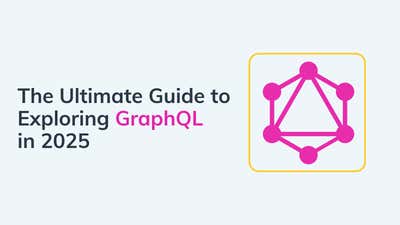GraphQL Fragments: Nested, Reusable, and Powerful
Clean up messy queries


GraphQL lets you ask for exactly the data you need—but when your queries get long or repetitive, things can quickly get messy. That’s where GraphQL fragments come in.
Fragments help you:
-
Reuse sets of fields across multiple queries
-
Simplify large queries with nested objects
-
Avoid repeating the same structure
This guide breaks down how GraphQL fragments work, why they matter, and how to use them effectively in real-world projects.
What Is a GraphQL Fragment?
A GraphQL fragment is a reusable unit of a selection set. That means instead of rewriting the same group of fields over and over, you define them once and include them wherever needed.
Example Without Fragment
query {
blogPost {
title
author {
name
bio
}
}
article {
headline
author {
name
bio
}
}
}
Notice how the author fields are repeated.
With a Fragment
fragment AuthorDetails on Author {
name
bio
}
query {
blogPost {
title
author {
...AuthorDetails
}
}
article {
headline
author {
...AuthorDetails
}
}
}Cleaner and more reusable.
How Fragments Work
A fragment must:
-
Be declared at the bottom of your query.
-
Match the type you're querying.
-
Use ...FragmentName inside your query.
Anatomy:
fragment FragmentName on TypeName {
field1
field2
}Use it with:
...FragmentName
Why Use GraphQL Fragments?
-
Cleaner code: Makes your queries easier to read and maintain
-
DRY principle: Don’t Repeat Yourself
-
Reusable patterns: Useful when querying similar types like Page, Post, Product
Works with nested content: Especially in Agility CMS where components are nested deeply.
Example with Agility CMS Content
Let’s say you have a content model with multiple content types that share a common reference field: linkedAuthor.
Fragment Declaration
fragment AuthorInfo on Author {
name
title
socialLinks
}Use in Query
fragment AuthorInfo on Author {
name
title
socialLinks
}
query {
post(id: "123") {
title
linkedAuthor {
...AuthorInfo
}
}
podcast(id: "456") {
name
linkedAuthor {
...AuthorInfo
}
}
}Fragments in Nested Structures
Fragments really shine in nested content blocks or structured content.
Example
fragment ImageFields on Image {
url
altText
width
height
}
query {
heroBanner {
heading
image {
...ImageFields
}
}
testimonialSection {
quote
avatar {
...ImageFields
}
}
}Can You Nest Fragments?
Yes! You can use fragments within other fragments.
Example
fragment AuthorFields on Author {
name
bio
}
fragment PostFields on Post {
title
date
author {
...AuthorFields
}
}
query {
allPosts {
...PostFields
}
}This is perfect when working with modular content types in Agility CMS, where references and nested structures are common.
Fragment Gotchas
-
Fragments must match the type exactly (check the schema!)
-
Don’t overuse: Small, specific fragments are better than one giant one
-
Playground requires fragments at the bottom
- Use the Docs panel in GraphQL Playground to confirm the field types
Use Cases for Fragments
-
Querying multiple content types with shared structures (e.g. Page, Post, Product)
-
Creating reusable UI components in your frontend that always need the same fields
-
Making your queries readable and maintainable
- Building with Next.js + Agility CMS, where GraphQL queries are used in page-level data fetching
Summary
GraphQL fragments are a key feature for writing clean, scalable queries. They let you define once, reuse often—which is critical when building with a headless CMS like Agility CMS.
Next Steps:
-
Explore your schema in the Agility CMS GraphQL Playground
-
Use fragments in Next.js projects to simplify your code
-
Learn how fragments relate to structured content modeling
Try fragments in your next GraphQL query and see how much cleaner your API requests become.

About the Author
Agility CMS is Canada's original headless CMS platform. Since 2002, Agility has helped companies across Canada and around the world better manage their content. Marketers are free to create the content they want, when they want it. Developers are empowered to build what they want, how they want.
- Get a demo for a personalized walkthrough.
- Try for FREE and experience Agility CMS.
- Contact us with your questions.



